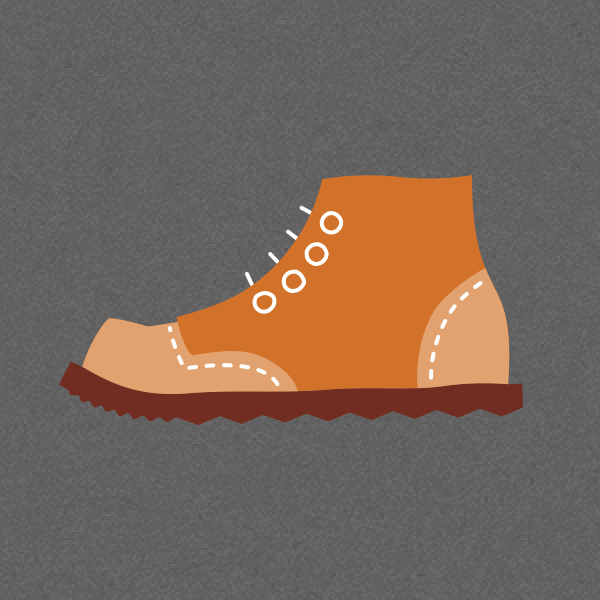Spring 2013
Higher on the Mountain
A small, threatened population of bighorn sheep defies the odds in Grand Teton National Park.
Above 10,000 feet in Wyoming’s Grand Teton National Park, more than 700 inches of snow can fall in a single year and wind-chill on the blustery summits can dip below -70o F. Avalanche-prone slopes plunge 6,000 vertical feet, broken by slabs of dark stone. There is virtually no vegetation or cover from storms. But here a special herd of bighorn sheep subsists year-round. Survival isn’t easy, but with increasing human threats from below—habitat encroachment, increased backcountry visitation, and severed migration corridors—the bighorn have nowhere else to go.
This was once a migratory population, summering in the mountains and wintering in the Jackson Hole Valley, where it intermingled with the area’s other bighorn herds. But when humans settled the valley in the early 20th century—building roads and homes, erecting fences and telephone wires, introducing domestic sheep and a plague of diseases—the Teton bighorns retreated to the rocky ledges and barren, wind-scoured ridgelines of their native mountains. By about 1950, they ceased their annual migrations and simply stayed put.
HOW BIG ARE A BIGHORN’S HORNS?
“When you look at where these sheep are living, you ask, ‘How are they surviving?’” says Aly Courtemanch, a habitat biologist for Wyoming’s Game and Fish Department, who has spent years studying the Teton herd with cooperation from the national park and the U.S. Forest Service. Today, approximately 125 bighorn sheep live in small groups on a few snow-free windblown and sun-exposed alpine ridges. “These animals are persisting between 9,000 and 12,000 feet, in areas as big as postage stamps,” says Grand Teton’s senior wildlife biologist Steve Cain. “The nutritional opportunities there are extremely poor—many of these animals probably fast through parts of the winter.”
It’s rare enough for bighorn populations to stay in one spot year-round, but the Teton herd is unique in one other critical way. Using DNA analysis, park biologists discovered that the Teton herd is cut off from all other bighorn populations, meaning it’s genetically isolated. And that spells trouble for the long-term success of the herd.
One solution would be to introduce breeding animals from other herds. “Bringing in animals from the outside could boost genetic variation,” Courtemanch explains. “But we’d also risk introducing disease, which could be catastrophic for such a small population.” In fact, a few months ago, six members of the nearby Jackson bighorn herd died unexpectedly; each carried a bacterial pathogen linked to deadly pneumonia.
More immediate threats to the Teton bighorn herd include increasing human disturbances and competition with a growing number of mountain goats. Bighorn sheep have excellent eyesight and hearing and will flee to avoid confrontation with humans and most other animals. In winter, they have nowhere to go but into deep snow, where they expend vital energy and expose themselves to predators like mountain lions. “With nowhere to escape and a nutritional deficit,” Cain explains, “the Teton herd is extremely vulnerable to any kind of disturbance.”
Today, more people are visiting the park’s mountains in winter than ever before, including the small, snow-free areas critical to the bighorns’ survival. Backcountry skiing, snowboarding, and mountaineering are increasingly popular in the Tetons, and the conflict is simple, according to Cain, who’s an avid backcountry skier himself: Frequent contact with human visitors can literally scare bighorn sheep to death. That’s why the park closes several of the key alpine habitat areas used by wintering sheep from December to April.
Part of Courtemanch’s study focused on geographic overlap between winter park users and bighorn using GPS data from collared sheep and dozens of volunteer backcountry skiers and snowboarders in the range. What she found was encouraging: Many bighorn spend winters in the closed areas, safe from human disturbance and displacement.
Mountain goats—animals non-native to the Tetons—may be harder to manage. According to Cain, goats have been in the park since 1979, but they didn’t start reproducing regularly until 2008. Robert Garrott, a Montana State University ecology professor, is studying the dispersal and behavior of sheep and goats throughout the Greater Yellowstone Area. The potential conflict, he says, is twofold.
“Goats are more aggressive,” he explains, “so if goats want to be where bighorn sheep are, bighorn will always leave the area.” The other problem is competition for resources. Higher elevations offer limited forage—perhaps not enough for bighorn sheep and goats, though no one knows for sure.

National Parks
You can read this and other stories about history, nature, culture, art, conservation, travel, science and more in National Parks magazine. Your tax-deductible membership donation of $25 or more entitles…
See more ›Grand Teton is keeping a close eye on the growing goat population and will begin forming a management plan in the next year, Cain says. Park Service policies aim to maintain native populations and natural ecosystems, so the best course of action is to prevent the goats from getting established in the first place.
Although threats facing the Teton bighorn herd are many, its population appears to be stable. Winter closures are keeping human visitors at bay, and improved tracking and increasing knowledge about the habits and behavior of the herd—gathered with help from park visitors—help protect additional habitat. The future of the Teton bighorn is tenuous but hopeful.
“This is an iconic animal and an integral part of the ecosystem,” Cain says. “It would be a tragedy if we lost bighorn sheep in the Tetons, for both aesthetic and ecological reasons. Fortunately, they seem to be defying the odds and persisting. And that’s a good thing.”
About the author
-
 Drew Pogge
Drew PoggeDrew Pogge is a writer and editor based in Bozeman, Montana. His work has appeared in Outside, Mountain, Skiing, and Backcountry.



